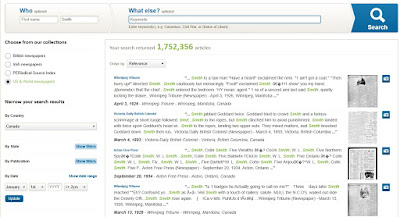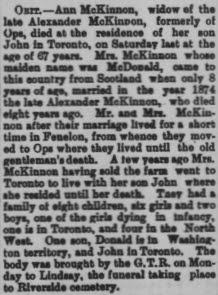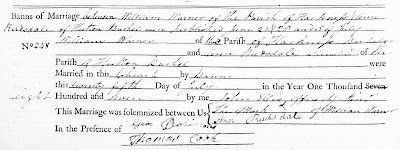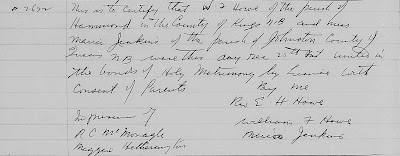One the many challenges often faced by genealogy and family history researchers is finding the original source of those transcriptions we often use in our family trees. Over the past week that has been a consuming task for me as I prepare to work on updating and creating source citations for the entry of my 4th great-grandfather
Joseph Starr (1757-1840), son of Samuel Starr and Abigail Leffingwell, on
Wikitree.
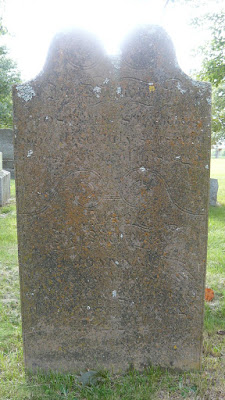 |
| Starr's Point Cemetery ( Kings County, Nova Scotia), Joseph Starr (died 8 Jul 1840) marker; personally photographed and read by Ken McKinlay, 17 Sep 2009. |
Up until very recently one of the resources I turned to for early records in the area of Kings County, Nova Scotia, Canada that my Chipman and Starr branches originally settled in in the 1760s has been the "Township Books, Kings County: Aylesford, Cornwallis, Horton" compiled by Lorna Woodman Evans in 1996
1. It is still an important reference book for me since it lets me quickly locate information on the families I'm researching in that area.
On page 120 in the compilation by Lorna Woodman Evans she recorded:
"Joseph Starr died at Cornwallis in 8th inst. aged 84,
one of the oldest inhabitants of that port of N.S.
- Haligonian of 18 Aug. 1840."
This would mean he died on 8 Aug 1840 but his marker says he died on 8 Jul 1840. An ugly conflict that needs to be resolved.
With the digitization project by FamilySearch of the
microfilms in their possession I've been able to find copies of the
Horton Township book, 1751-1895 and the
Cornwallis Township and church records, 1720-1920 on FamilySearch.org.
This is where my latest research adventure really starts.
When I reviewed
2 the digitized copy of the Horton Township book found on FamilySearch I couldn't locate that entry for Joseph Starr. Of course, what made it more of a challenge is the Township book isn't exactly in alphabetical order by family name. The older part of the book is mostly sorted by family name but later sections are a mishmash with family groups interspersed with pages listing deaths for a specific year. After much reading I was able to locate all the other Starr entries in Horton Township except for one...Joseph's. So I went back to the beginning, the beginning of the compilation that is, and read the explanatory notes by Lorna. There she wrote:
"The Horton Township records are preserved in copies of at least four slightly different books. Three copies are found in the K.H.S. Family History Library: one is a photocopy of an original book kept by the Horton Dyke Commissioner, another is a microfilmed copy of a handwritten book with added margin notes and the third is a microfilmed copy of a very neatly handwritten record with entries as late as 1895. In addition to these three copies Douglas Eagles mentions a transcript of the Horton Town Register held at the Public Archives of Canada3 in Ottawa."
"We want to thank Douglas Eagles for allowing the use of his Horton Township Records which he published in 1974. Nearly all of the Horton information recorded here came from his work, with the exception of a few details found in the third copy of the township book previously mentioned."
Based on the handwriting and the FamilySearch description that third copy of the township book appears to be the one that FamilySearch microfilmed and recently digitized. The beginning of the digitized microfilm states that it came from the "Public Archives of Nova Scotia, Halifax.Can." with the title recorded as "Horton Township MG-4 Vol 74." This matches the description found on the Nova Scotia Archives page for the
Township book of Horton Township, Kings County.
Since I reside in Ottawa I figured I'd check if a copy of Douglas Eagles' book was available at Library and Archives Canada since it appears they heavily relied on his work. A search using LAC's
Aurora system revealed that his "
Horton Township records, Kings Co., Nova Scotia : register of births, marriages and deaths, 1751-1895" was available. I was doing this research from home but with the new Aurora system I could place my order without having to visit LAC. However, with it being a preservation copy it could take between 2 to 5 business days to be retrieved. To my surprise I received an e-mail the next day stating the book was waiting for me at Library and Archives Canada. A day later I popped into the Special Collections room and quietly began to check out Mr. Eagles book. This time I started at the beginning and came across this little but significant note on page iii:
"Notices of a few marriages and obituaries gleaned from the "Haligonian" and the "Nova Scotian" by Ross Graves of Upper Stewiacke, N.S., and 'bible' information on several families contributed by John Duncanson, 193 Queen St. Sarnia have been included and gratefully acknowledged."
I also came across the entry for Joseph Starr's death on page 77:
"Joseph Starr d. at Cornwallis on 8 inst aged 84 years, one of the oldest
inhabitants of that part of N.S. Haligonian of 18 Aug. 1840."
Could it be that those several days of reading and rereading the digitized microfilm was for naught? Could it be that Mr. Eagles added information not found in the Township book? It seems that way.
What about the Haligonian newspaper? Could I find a copy at Library and Archives Canada? No such luck. Maybe at Nova Scotia Archives? Well...sort of. They only have the 7 Aug 1840 edition of the Haligonian and General Advertiser. That's "annoying". A search using Worldcat reveals that both Acadia University in Wolfville and the University of Kings College in Halifax have copies. But they can only be consulted on-site and popping over to Nova Scotia, as much as I would love to, just isn't in the cards for the immediate future. So yet another to-do item goes into my genealogy research software.
However, if the notice was in one newspaper might it be found in other newspapers of the time in Nova Scotia?
On the shelves of the Genealogy Services room at Library and Archives Canada you can find a number of books with transcriptions and family histories. I found "Vital Statistics From Halifax Newspapers, 1840-1843" compiled by Jean M. Holder and assisted by Grace L. Hubley and published by the Genealogical Association of the Royal Nova Scotia Historical Society in 1985 in Halifax. There on page 27 I came across:
"A.R., Sat., 15 Aug. 1840
454. + 8 July at Cornwallis: Joseph STARR, 84"
From checking the list of acronyms at the start of that compilation I learned that "A.R." is the Acadian Recorder. I also know that Nova Scotia Archives in their
Nova Scotia Historical Newspapers collection has placed online a digitized copy of that newspaper. Even better, they have the 15 Aug 1840 edition available. Here is the entry clipped from that edition of the Acadian Recorder.
 |
| "Died - Joseph Starr," Acadian Recorder, 15 Aug 1840, p. 3, col. 1; digital images, Nova Scotia Archives (https://archives.novascotia.ca/ : accessed 19 Oct 2019), Nova Scotia Historical Newspapers. |
Hmmm, "8th ult."not "8 inst". This puts his death as occurring on 8 Jul 1840.
Now I at least have the information on the grave marker which states he died "July 8th 1840" matching up with at least one newspaper. That's a good thing. I still need to review the Haligonian at some point in the future to see if the transcriber made a mistake or the newspaper was in error when originally printed.
During this research escapade I also took the time to check Thematic Guide 1206 to Parish Registers
4, Volume 1 found in the second floor Reference Room of LAC. I often consult that guide to see if there are parish registers held at Library and Archives Canada that might help me out in my latest quest. Unfortunately they haven't digitized this 2 inch binder so it can only be reviewed onsite. However, I did see that they have listed several entries for Horton, Kings County, Nova Scotia:
- C-3027: Civil registers BMD 1751-1895 (MG 9, B 9-7)
- C-3021: St. John's Anglican Church, Cornwallis, Annapolis Co. B 1783-1902, M 1783-1911, D 1830-1920 includes Horton, and Wilmot.
- C-3022: St. John's Anglican Church B 1823-1877
- H-1806: Eagles' Compilation of Township Registers, etc. BMD 1751-1895
- H-1806: Eagles' Cemetery Recordings for 19 Horton Township cemeteries BD 1767-1873
Could the "Eagles' Compilation of Township Registers, etc. BMD 1751-1895" be the same as the book I read in the Special Collections room?
It just so happens that the
Héritage Project site holds digitized copies of a number of the C, H, and T microfilms from Library and Archives Canada. It isn't the easiest site to navigate but when it comes to being able to research from the comfort of your home I'm not going to complain too loudly. A quick check and I discover that H-1806 is in fact digitized and available on the Héritage site. After a few minutes of bouncing around the 810 pages of that digitized reel I found the start of
Mr. Eagles book (explanatory notes starting on image 151). So now you too can review his material from your home.
A few lessons to take with you if you've made it this far in my post:
- If you have conflicting information then take the time and effort to resolve the conflict. You might be surprised at what you find.
- Always read the introduction pages to any transcription books. You may find clues as to where they got the information. You might even discover new facts and sources.
- If a book cites another book, make sure that you review that book also (repeat as often as necessary to get to the original source).
- Not everything is digitized and online but it is getting better over time.
1. Evans, Lorna Woodman, compiler.
Township Books, Kings County: Aylesford, Cornwallis, Horton. Kentville, Nova Scotia: Family History Committee of The Kings Historical Society, 1996.
2. Not just once but I looked through that digitized copy for many hours over several days!
3. Now part of Library and Archives Canada in Ottawa.
4. Yes, I keep asking the Genealogy Services staff when they will have that guide available online since it is invaluable to those using the Héritage Project site.

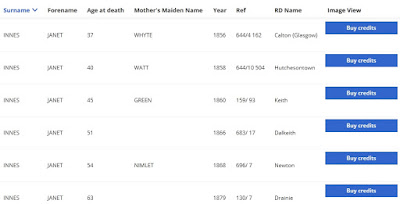



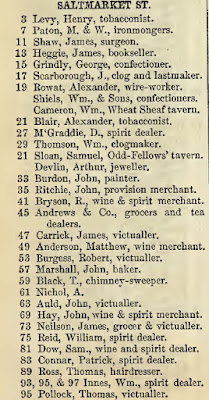
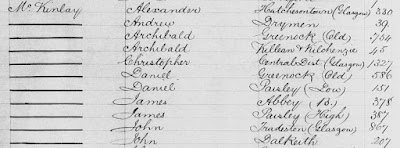



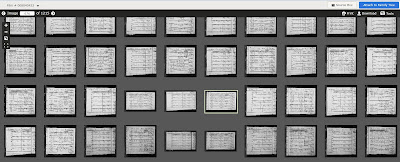
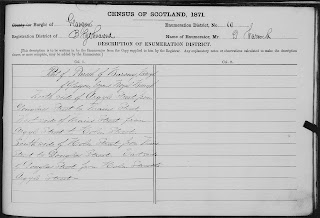
 Normally I write about the various resources, paper and digital, and processes that I make use of when I try to solve a problem in my genealogy and family history research. Today's post is a little bit different. I'm writing about a piece of software that I have found to be invaluable in dealing with digitized images: Microsoft Image Composite Editor or ICE. For those that don't have a Microsoft Windows based system, unfortunately this tool won't help you out since it is for Windows 64-bit and 32-bit systems only. And if you like to spend money in your genealogy research then I have to disappoint you. ICE is free. Yes, you read that correctly, this is a FREE although unsupported product from Microsoft.
Normally I write about the various resources, paper and digital, and processes that I make use of when I try to solve a problem in my genealogy and family history research. Today's post is a little bit different. I'm writing about a piece of software that I have found to be invaluable in dealing with digitized images: Microsoft Image Composite Editor or ICE. For those that don't have a Microsoft Windows based system, unfortunately this tool won't help you out since it is for Windows 64-bit and 32-bit systems only. And if you like to spend money in your genealogy research then I have to disappoint you. ICE is free. Yes, you read that correctly, this is a FREE although unsupported product from Microsoft.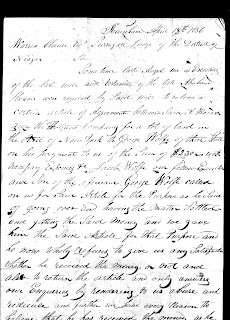
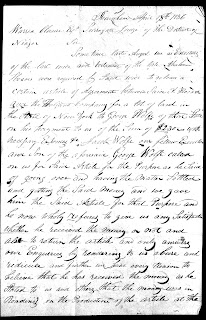
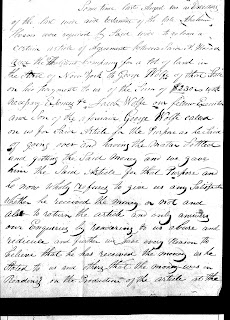
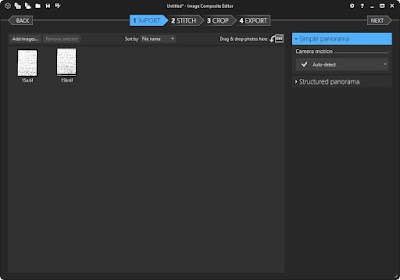
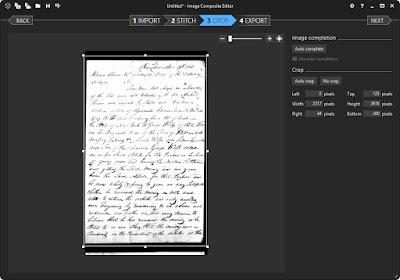
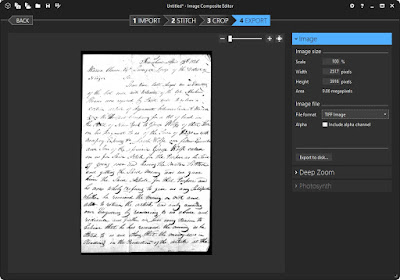
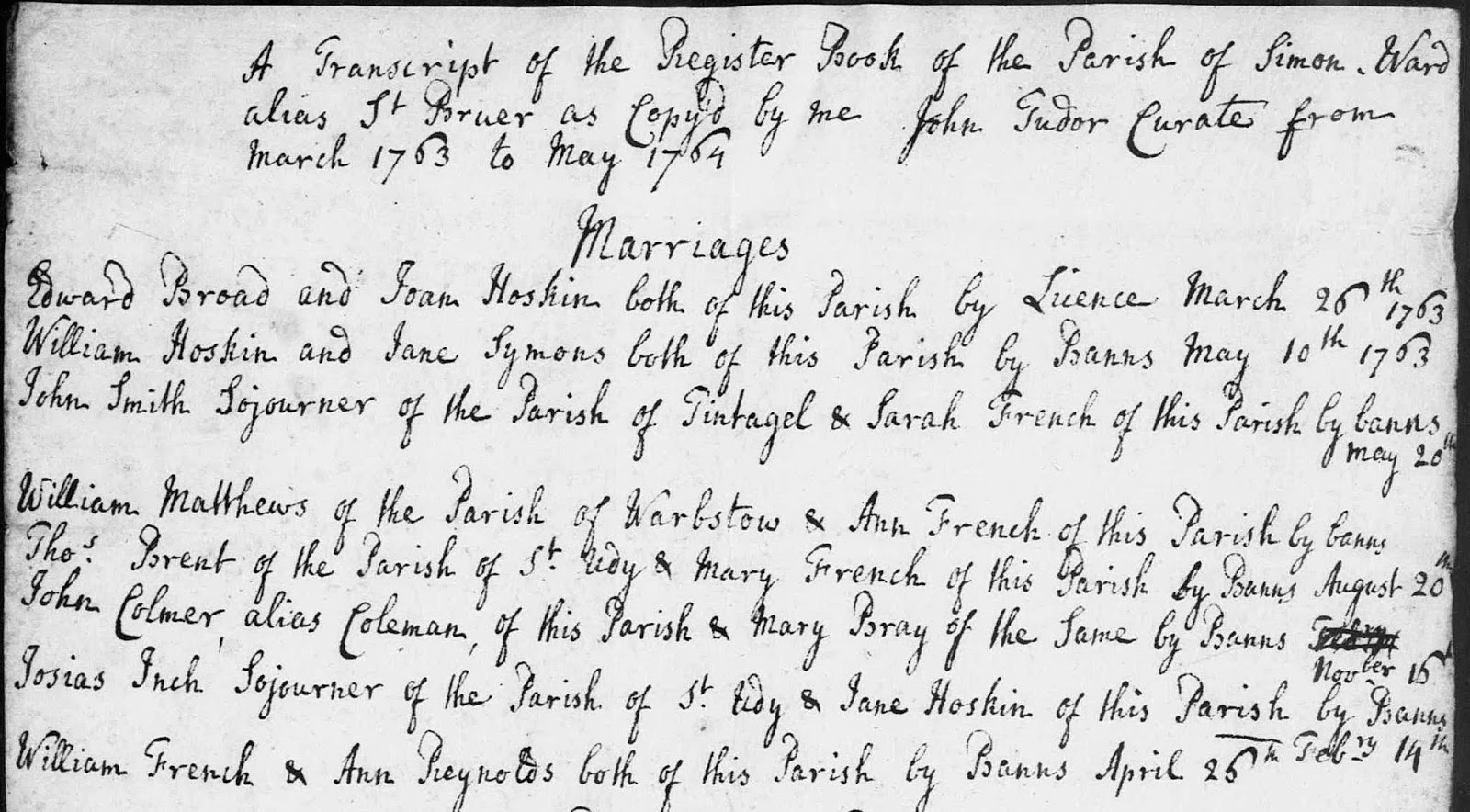 With relatively easy to use online genealogy databases and images along with the capabilities of computers to search large amounts of data very quickly, today's genealogy research can be very easy at times. Yet, it can also be challenging at the exact same time. This is one of those cases.
With relatively easy to use online genealogy databases and images along with the capabilities of computers to search large amounts of data very quickly, today's genealogy research can be very easy at times. Yet, it can also be challenging at the exact same time. This is one of those cases.



